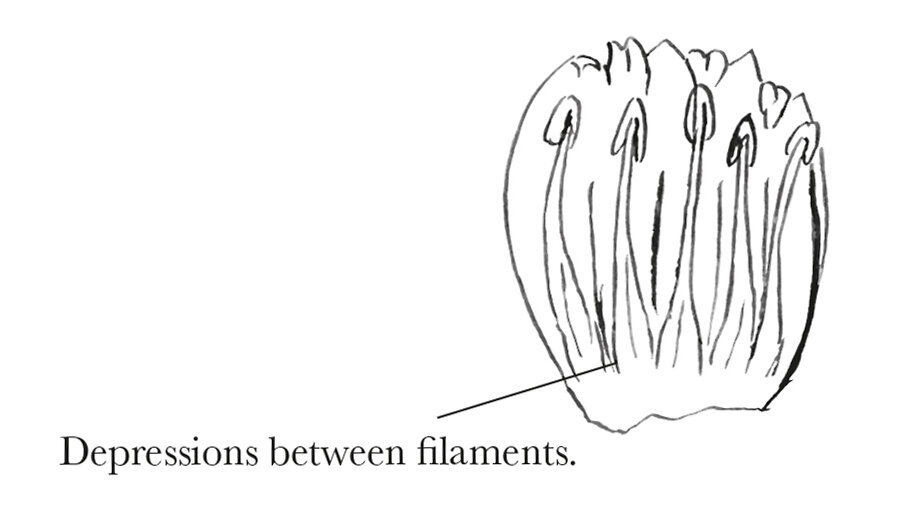From W. W. Bailey 28 September 1877
Providence, Rhode Island
September 28th, 1877
Charles Darwin, F.R.S.
Dear Sir
I have been ⟨read⟩ing your last two works with con⟨siderable⟩ interest. In them I noti⟨ce⟩ that ⟨ ⟩ observations of my ⟨ ⟩ have been considered worth recording and I therefor write you now to add a few notes which may be of use.1
My attention was recently directed by Mr Thomas Battey of this city, to the action of humble-bees in relation to Impatiens fulva.2 This plant, known commonly as “jewel-weed”, presents a profusion of orange-yellow flowers, spotted within, and gracefully pendant. The sac or nectary is long and so bent that a bee in order to pierce it, has to work back downwards. Almost every flower is perforated. I intended to send you some blossoms but they have now gone by. The net number of the flowers I suppose ⟨ ⟩ this burglarious ⟨ ⟩
In regard to Gerardia, I have never ⟨ ⟩ any species but G. pedicularia ⟨ ⟩ This, also blooms ⟨ ⟩ profuse⟨ly⟩ ⟨ ⟩ preserve oils, and ⟨ ⟩used with humble-bee ⟨ ⟩ ⟨ ⟩n Tropaeolum is ⟨ ⟩ here, ⟨ ⟩ not so unfailingly as in the case ⟨abo⟩ve cited.3
Query, ⟨d⟩o be⟨es⟩ remember this habit from year to year, or each season reacquire it?
In regard to plants visited by wasps, I will say that several, if not all of our Solidagos are so visited, as they are also by the capricorn and blister-beetles, butterflies, and bees innumerable.4 One of our Gentians, the curious G. Andrewsii, is always nearly if not quite closed, It is known to the people as “box-gentian” for this reason, Two friends of mine have seen this flower visited by bees, which ⟨p⟩ressed upon the plicate tips of the coro⟨lla⟩—and act⟨ually⟩ ⟨di⟩sappeared within. ⟨ ⟩ anthers are extrorse, and the filaments ⟨are⟩ shorter than the pis⟨tils⟩, moreover, th⟨e⟩ filaments are dilated at the base, ⟨ ⟩ form with the adnate corolla ⟨ ⟩ depressions for nectar5 ⟨half a line destroyed⟩ apt to come ⟨half a line destroyed⟩— all kinds of ⟨ ⟩ and piercing them [oppose] ⟨ ⟩ the ⟨ ⟩ principles, as I [presume] ⟨ ⟩ preserve even in the ⟨ ⟩

I feel very sure that my first observation in regard to Bouvardia leiantha is correct, although it has not been tested in all the ways you suggest.6 Indeed, as it grows in a conservatory and is winter-flowering (at least is made so by the florist) I cannot tell what influence insects would have upon it. The contrast of the two forms is marked, not only as regards the comparative length of styles, but in the appearance of the corolla itself. I hope soon to send you some pressed ⟨ ⟩ of this plant. It will bloom in abt a month, I hope then to ⟨ ⟩pose the pollen of the two forms.
⟨ ⟩ a group of two maples (Acer ⟨ ⟩)— one of which is in the ⟨ ⟩ but the other, as far as ⟨I h⟩ave seen, o⟨ver the⟩ last six years observa⟨tion⟩ bears female flowers only. ⟨ ⟩ to what you say on P. 12 of y⟨our⟩ ⟨las⟩t book.7
I hope you will pardon my rambling letter. It is just possible that something in it may interest you; in such case, I shall be glad that I wrote.
Can I help you by observation upon any ⟨pa⟩rticul⟨ar⟩ plant or class of plants? If so, ⟨do not⟩ hesitate to call upon me,
With sincere respect and esteem, | I am, Sir, | Yours very truly | W. W. Bailey
CD annotations
Footnotes
Bibliography
Bailey, William Whitman. 1873. Perforation of Gerardia pedicularia by bees. American Naturalist 7: 689–90.
Bailey, William Whitman. 1876. Dimorphism. Bulletin of the Torrey Botanical Club 6: 106.
Cross and self fertilisation 2d ed.: The effects of cross and self fertilisation in the vegetable kingdom. By Charles Darwin. 2d edition. London: John Murray. 1878.
Cross and self fertilisation: The effects of cross and self fertilisation in the vegetable kingdom. By Charles Darwin. London: John Murray. 1876.
Forms of flowers: The different forms of flowers on plants of the same species. By Charles Darwin. London: John Murray. 1877.
Freeman, Richard Broke. 1977. The works of Charles Darwin: an annotated bibliographical handlist. 2d edition. Folkestone, Kent: William Dawson & Sons. Hamden, Conn.: Archon Books, Shoe String Press.
Summary
Has noticed citation of his observations in CD’s latest books; writes to add some notes on fertilisation and forms of flowers.
Letter details
- Letter no.
- DCP-LETT-11157
- From
- William Whitman Bailey
- To
- Charles Robert Darwin
- Sent from
- Providence, R.I.
- Source of text
- DAR 160: 16
- Physical description
- ALS 4pp damaged †, CD note
Please cite as
Darwin Correspondence Project, “Letter no. 11157,” accessed on 18 April 2024, https://www.darwinproject.ac.uk/letter/?docId=letters/DCP-LETT-11157.xml


